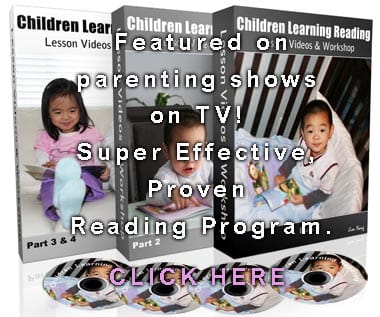How to Teach Guided Reading
Guided reading is a powerful instructional tool that can help students develop a deeper understanding of text and increase their reading comprehension. Guided reading is an interactive reading experience in which the teacher works with a small group of students to guide their reading and comprehension of a text. Through guided reading, teachers can help students develop the skills they need to become successful readers. This guide will provide an overview of how to teach guided reading, including tips on planning, selecting materials, and facilitating student learning.

How to Structure a Guided Reading Lesson
![]()
Guided reading is an important part of a student’s literacy development. It allows students to practice reading strategies and build their comprehension skills. Guided reading lessons provide an opportunity for teachers to assess students’ reading levels and provide targeted instruction. When structuring a guided reading lesson, there are a few key steps to follow.
First, select a text that is appropriate for the student’s reading level. The text should be challenging enough to provide a learning opportunity, but not so challenging that the student is unable to make any progress.
Second, preview the text with the student. This can be done by looking through the text and discussing the illustrations, pictures, and key words. This will help the student to become familiar with the content of the text and build their comprehension skills.
Third, provide the student with a guided reading instruction sheet. This sheet should include the key words and definitions, as well as any important strategies that will help the student understand the text.
Fourth, have the student read the text aloud. This will help the student with their pronunciation and fluency. As the student is reading, the teacher should provide feedback and guidance, as needed.
Fifth, have the student answer questions related to the text. This will help the student to further develop their comprehension skills.
Finally, end the lesson with a reflective activity. This can include a discussion or writing activity that allows the student to think about the content of the text and how it relates to their own life experiences.
By following these steps, teachers can create an effective and engaging guided reading lesson that will help their students build their literacy skills.
Utilizing Guided Reading Strategies to Increase Reading Comprehension
![]()
Reading comprehension is an essential skill in learning and retaining knowledge. Guided reading is an instructional approach used by teachers to help students develop their reading comprehension skills. Through guided reading, teachers provide targeted instruction and activities to enhance student understanding of texts.
Guided reading can be used in classrooms of all grade levels and is especially beneficial for students who are struggling readers. With guided reading, teachers can easily identify areas where students need more practice to increase their comprehension skills.
The key to successful guided reading is to provide students with the right level of texts. To do this, teachers must first assess each student’s reading level. Once they know the reading level of each student, they can provide texts that are challenging, yet still accessible to the student.
The teacher then guides the student through the text, asking questions and providing assistance as needed. This helps students understand the text better and encourages them to think more deeply about the material. It also helps teachers identify any areas where the student might need more help.
In addition to guiding students through texts, teachers can also use guided reading to help students practice their reading skills. For example, teachers can have students practice reading aloud, using different strategies such as chunking, skimming, and rereading. These strategies can help students better comprehend the material.
Using guided reading strategies to increase reading comprehension can be highly effective. It can help teachers identify areas where students need additional support and also give students the opportunity to practice their reading skills. With the right guidance and support, students can become better readers and comprehend more complex texts.
How to Create and Manage Guided Reading Groups
![]()
Are you looking for an effective way to manage your guided reading groups? Guided reading is an important part of any classroom and is an essential tool to help students become successful readers. To ensure that your guided reading groups are successful, it is important to create effective plans and manage them effectively.
Creating Effective Guided Reading Groups
Before you can begin to manage your guided reading groups, you must first create them. When creating your groups, it is important to consider the level of each student’s reading ability. You should also consider the student’s interests and personality. Make sure that you create groups of similar levels and that the group size is manageable (4-5 students).
Once you have created your groups, you can begin to plan the activities that you will do with them. Be sure to include activities that will help students develop their reading skills, such as:
- Reading aloud in small groups
- Discussing the text
- Writing about their responses to the text
- Participating in activities that help to build comprehension
- Comparing and contrasting texts
- Practicing fluency
Managing Guided Reading Groups
In order for your guided reading groups to be successful, it is important to manage them effectively. Here are some tips for managing your groups:
- Set expectations for behavior and performance at the beginning of the session.
- Model expectations for the students.
- Ask questions to check for understanding.
- Be sure to give praise when students are successful.
- Monitor student progress and provide feedback.
- Provide activities that are appropriate for each group’s reading level.
- Provide support when needed.
- Have a plan for when a student needs additional help.
By creating effective guided reading groups and managing them effectively, you can ensure that your students have the best chance at success in their reading development. With the right plan and management, you can help your students reach their full potential.
Ideas for Implementing Guided Reading Activities
![]()
Guided reading is an important activity for children as it helps them build skills such as fluency, comprehension, and phonemic awareness. As a teacher, implementing guided reading activities into the classroom can help create a more structured and engaging learning environment. Here are some ideas for implementing guided reading activities:
- 1. Start by assessing the student’s reading level. This will help you determine which activities are appropriate for each student.
- 2. Begin with shorter and simpler texts. This will help the students become comfortable with the process and build their confidence in reading.
- 3. Ask questions before, during, and after reading. This will help the students engage with the text and encourage them to think critically.
- 4. Provide reading materials that are related to the students’ interests. This will help keep them engaged and motivated to read.
- 5. Allow students to read aloud. This will help them become more confident in their reading skills.
- 6. Utilize shared and interactive reading activities. This will help the students reinforce their understanding of the text.
- 7. Provide feedback and support. This will help the students feel comfortable and encourage them to ask questions.
Guided reading activities are a great way to help students become better readers. With a bit of planning and creativity, these activities can be a fun and engaging way to help children become confident and successful readers.
How to Help Students Read at their Own Level
![]()
Reading at a student’s own level is an important component of their learning process. When students read material that is too difficult, they become frustrated and discouraged. On the other hand, when they read material that is too easy, they can become bored and lose interest. Finding the right material for each student requires careful consideration and planning.
Here are some tips for helping students read at their own level:
- 1. Know the student’s reading level. Before selecting material for a student to read, it is important to have an accurate understanding of the student’s reading level. An easy way to do this is to have the student take a standardized reading test and use the results to determine the appropriate reading level.
- 2. Select appropriate material. Once you have an understanding of the student’s reading level, you can begin to select material that is appropriately challenging. It is important to consider the student’s interests when selecting material as this can help to increase their engagement and enthusiasm.
- 3. Provide support and guidance. It is important to provide students with support and guidance as they read. You can do this by modeling strategies such as skimming and scanning for information, and discussing the material with the student after they have read it.
- 4. Monitor their progress. As the student reads, it is important to monitor their progress to ensure that they are understanding and comprehending the material. If the material is too easy, it may be time to provide more challenging material.
By following these tips, you can help to ensure that students are reading at their own level. This will help to increase their confidence and engagement in the learning process.
Professional Development Ideas for Teaching Guided Reading
![]()
Guided reading can be an incredibly effective teaching approach for educators looking to build literacy in their classrooms. To ensure success, educators should remain up-to-date with the latest strategies and resources. Here are some professional development ideas for teaching guided reading:
- 1. Attend a Guided Reading Workshop: Taking a workshop or course is one of the best ways to get informed on the latest research and strategies for teaching guided reading. Look for workshops and courses offered by educational organizations or universities.
- 2. Read Professional Journals: Professional journals and magazines are a great way to stay up-to-date on the latest research and resources for teaching guided reading. Consider subscribing to a few professional journals and make time to read them regularly.
- 3. Join a Guided Reading Email List: Professional development email lists are great resources for staying up-to-date on the latest strategies and resources for teaching guided reading. Look for email lists or discussion groups specifically tailored to guided reading.
- 4. Join a Guided Reading Book Club: Joining a book club devoted to guided reading is a great way to connect with other educators and learn from each other. Look for book clubs or discussion groups in your area or online.
- 5. Seek Out Professional Development Opportunities: Look for professional development opportunities related to guided reading. Many organizations and universities offer seminars and workshops on the subject.
- 6. Take Online Courses: Online courses are a great way to stay up-to-date on the latest strategies and resources for teaching guided reading. Look for online courses offered by educational organizations or universities.
- 7. Network with Other Educators: Networking with other educators is a great way to stay informed about the latest strategies and resources for teaching guided reading. Consider joining an educational organization or attending conferences related to guided reading.
By staying up-to-date on the latest strategies and resources, educators can ensure that they are providing their students with the best possible guided reading instruction. With these professional development ideas, educators can keep their teaching skills sharp and make the most of guided reading.
Frequently Asked Questions
![]()
Q: What is guided reading?
A: Guided reading is an instructional approach that involves a teacher working with a small group of students who demonstrate similar reading abilities. The teacher provides instruction in a particular reading skill or strategy and then helps the students apply that skill or strategy to their reading.
Q: How do I prepare for a guided reading lesson?
A: To prepare for a guided reading lesson, you should select a text that is appropriate for the students’ reading level. You should also prepare any materials you may need, such as worksheets or graphic organizers. Finally, you should plan out your lesson in advance, including the activities you want to use and the skills or strategies you will focus on.
Q: How do I introduce a guided reading lesson?
A: When introducing a guided reading lesson, begin by providing an overview of the lesson objectives and the activities that you will use. Next, provide any necessary background knowledge or review any skills that are needed for the lesson. Finally, provide the students with a brief introduction to the text.
Q: What are some strategies for teaching guided reading?
A: There are many strategies for teaching guided reading, such as modeling, questioning, summarizing, and providing feedback. Additionally, you may want to provide opportunities for students to discuss the text with one another, practice reading aloud, and practice retelling the story.
Q: How do I assess students during guided reading?
A: During guided reading, you can assess students’ progress by observing their interactions with the text and their ability to apply the skills or strategies they are learning. You can also ask questions and have students complete activities to help you evaluate their understanding of the text.
Q: How do I keep students engaged during guided reading?
A: To keep students engaged during guided reading, use a variety of activities and create opportunities for students to interact with the text. Additionally, make sure to provide appropriate levels of challenge and support, and ask questions that promote critical thinking and meaningful discussions.
Conclusion: How to Teach Guided Reading
![]()
Guided reading is an effective teaching tool that can be used to help students become more confident and independent readers. It is important to create a safe and supportive environment for students to practice their reading skills and develop a deeper understanding of text. By providing students with purposeful reading material, explicit instruction, and opportunities for practice, teachers can help students become proficient and confident readers.



